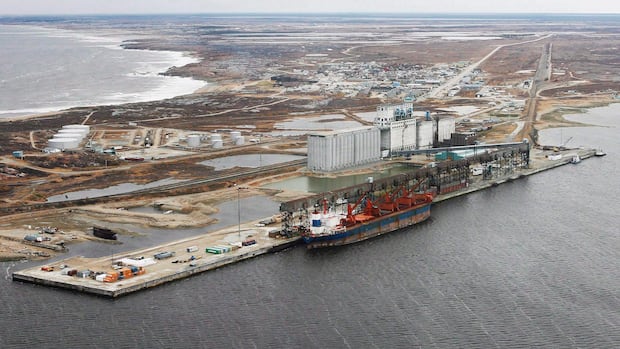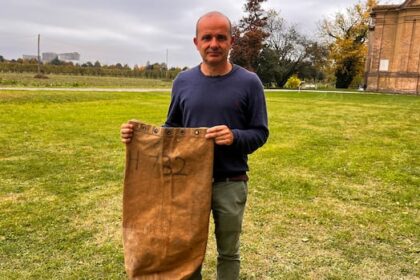Compared to other major projects granted “national importance” status by Mark Carney’s Liberal government, the proposed expansion of the Port of Churchill is still a very fuzzy idea.It’s relatively easy to wrap your brain around what it means to expand a liquefied natural gas terminal in Kitimat, B.C. or build a new copper mine at McIlvenna Bay, Sask., to name two major projects already in the works.Manitoba’s megaproject involves five components, most of which remain entirely conceptual at this point and can not be defined before a series of economic, engineering and environmental questions are answered.According to Premier Wab Kinew’s office, the project involves a port expansion of some sort, an upgraded Hudson Bay Railway, an all-weather road to Churchill and perhaps other northern Manitoba destinations, the presence of icebreakers in Hudson Bay, and an “energy corridor” that could involve the transport or transmission of liquefied natural gas, crude oil, natural gas, electricity or hydrogen, the latter most likely in form of ammonia.Kinew said Thursday “it’s going to take some time” to better define the scope of the project, let alone come up with a projected cost. The province is spending $750,000 this winter to study what would be required in terms of icebreaking to allow all-season shipping through Hudson Bay, he said.The list of what needs to be determined beyond that is long for Arctic Gateway Group, the Indigenous-led company that owns the railway to Churchill and the port in the northern Manitoba town.It must determine the economic case for the increased shipping of commodities through Canada’s coldest rail-accessible deepwater port, the environmental feasibility of including fossil fuels among those commodities and the geographic placement of an expanded port — if such an expanded port is even possible, given the climate and geography of Hudson Bay.Trevor Heaver, professor emeritus in transportation and logistics at the University of British Columbia, said he doesn’t believe there will be a purely economic case for expanding the Port of Churchill — but says Canada should still pursue the project, anyway.’Value as an insurance policy’Heaver said he cannot conceive of a single commodity — not potash, not minerals and not even fossil fuels — that makes more sense to ship through Churchill than through Canada’s existing coastal seaports.”I can’t see this being financially feasible. There’s not going to be a positive economic return there,” Heaver said Thursday in an interview. “But you’ve got to view these things from a national perspective, and that is present in this route.”Heaver said Canada ought to consider the Port of Churchill as an insurance policy against another flood at the Port of Vancouver, another labour disruption there or at the Port of Montreal, or potential shipping obstacles through the United States.By definition, insurance comes with a cost.”But it’s surprising how often a high-cost alternative will become a useful niche,” Heaver said.”The economics may play out that it doesn’t pay financially, commercially. So then you’re left with the issue of how much are you prepared to pay for the resilience, and how much are you prepared to pay for the sovereignty which comes from it?” he said.“How much are you prepared to pay for the revitalization of northern Manitoba?”This does not mean Arctic Gateway, and the Carney and Kinew governments, do not need to find out how much actual interest there is from the private sector for shipping through Churchill, even on an occasional basis.In recent months, there has been no shortage of skepticism for the viability of the Hudson Bay shipping route in the business pages of the Toronto Star and Globe & Mail.”It’s only in the national interest if the companies use it. So it has to have value as an insurance policy for these alternate logistics routes for the companies,” Heaver said.Where to build?The economic case must also factor in upgrades to the Hudson Bay Railway, which requires a sturdier rail bed to handle heavier loads and may need to be rerouted from the soggy north-south stretch of track that crosses the muskeg between Churchill and Gillam.There is also the question of where to place an expanded port. The mouth of the Churchill River, where the existing port sits, is protected from the stormy weather of Hudson Bay but is too narrow to handle many more ships. An offshore artificial island would have more room but would be very expensive, even if it could withstand the impact of drifting ice, which is expected to become more common on Hudson Bay as the effects of climate change become more noticeable.This annotated Google Maps image shows the Hudson Bay coast near Churchill, including Button Bay. (Google Maps)The world’s best-known Arctic seaport, the Port of Murmansk in northwestern Russia, benefits from sitting at the end of a protected inlet. So does the liquefied natural gas terminal at Kitimat, B.C., which does not require the help of icebreakers to operate.Anywhere near Churchill that is not within the mouth of the Churchill River would be entirely exposed.Barry Prentice, who directs the Transport Institute at the University of Manitoba’s Asper School of Business, said the only location near Churchill that is less exposed is Button Bay, west of the Churchill River.That location has the added advantage of sitting west of the estuary where thousands of belugas congregate during the summer.”You would have to have a bridge, but it’s close enough to the town of Churchill and still yet far enough away that it wouldn’t interfere with the belugas and so on,” Prentice said.He casts doubt on the viability of any other place for a new seaport along Manitoba’s Hudson Bay coastline, including near the mouth of the Nelson River, where the Calgary-founded company NeeStaNan has proposed a second Manitoba port.That location is wedged between the protected coast of Wapusk National Park and the mouth of the fast-flowing Nelson. It’s also even more exposed to the prevailing northeastern winds on Hudson Bay than Churchill.The Nelson River enters Hudson Bay close to Wapusk National Park, as this Google Maps image shows. (Google Maps)Prentice also said the Nelson River area doesn’t make sense when you have an existing town at Churchill.”Governments aren’t very keen these days to put in schools and hospitals and what have you in for another place if they’ve already got one. So I think their chances are slim, to be honest,” he said.Prentice said even if Churchill proves to be too difficult a location for a major port expansion, it could be expanded less ambitiously by adding a container terminal that could reduce the need to ship commercial goods across the Atlantic through the Port of Montreal.Churchill can already handle longer ships than Montreal, due to restrictions on the St. Lawrence River.Heaver, however, said he does not believe a container port would be viable on the coast of Hudson Bay. But he nonetheless believes a year-round coldwater port is a good idea, and not just as insurance for shipping companies.”If you’re going to have icebreakers going around in large part to establish sovereignty, you might just as well have them available to facilitate some commercial activity,” he said.
Thursday, 25 Dec 2025
Canada – The Illusion
Search
Have an existing account?
Sign In
© 2022 Foxiz News Network. Ruby Design Company. All Rights Reserved.
You May also Like
- More News:
- history
- Standing Bear Network
- John Gonzalez
- ᐊᔭᐦᑊ ayahp — It happened
- Creation
- Beneath the Water
- Olympic gold medal
- Jim Thorpe
- type O blood
- the bringer of life
- Raven
- Wás’agi
- NoiseCat
- 'Sugarcane'
- The rivers still sing
- ᑲᓂᐸᐏᐟ ᒪᐢᑿ
- ᐅᑳᐤ okâw — We remember
- ᐊᓂᓈᐯᐃᐧᐣ aninâpêwin — Truth
- This is what it means to be human.
- Nokoma











